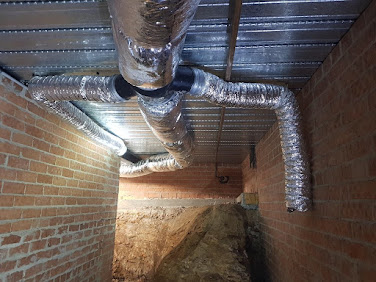Subfloor ventilation Sydney is an important investment in your flooring. Not many people realize just how important subfloor ventilation is. Your subfloor is an essential part of the building, which is why you need to do what you can to ensure the longevity of this part of your flooring. Reading on, you can learn all about what subflooring ventilation is and how subfloor ventilation works.
What is Subfloor Ventilation?
The subfloor ventilation system works to extract damp air from inside of the home and then allows the dry air entering into the home, all through the areas underneath your floor. This system is installed in the subfloor area of the home with the purpose of preventing any excess moisture from getting inside of your home. If you don’t have proper subfloor ventilation, you can experience the following:
- Mold growth in wardrobes
- Mold growth on or in your walls
- Issues with allergies and asthma
- Signs of termites, as they love damp subfloors
How Does Subfloor Ventilation Work?
As previously mentioned, the subfloor ventilation is supposed to replace the moist air with dry air. The simplest way to do this is through installing a number of vents in the wall throughout the building or home to offer natural ventilation for the underfloor ventilation. Sometimes this natural approach is sufficient enough. However, sometimes there needs to be a subfloor ventilation system installed using subfloor fans, which helps you to take the damp and stale air from the subfloor area. The system will then replace it with fresh air that is drawn from the outside by the subfloor fans.
These fans are installed to create a cross flow ventilation, which pulls the fresh air from one part of the home or building through the subfloor and extracts moisture on the opposite side. This increases the underfloor ventilation. For this cross flow to be effective, the air should only enter in from one side of the building and the subfloor fans should be extracting this from the opposite side of the building. If the cross flow isn’t really an option, you can create ducts for the subfloor to other locations in order to extract the moisture from the central locations or other specific damp locations.
You need to choose where to install your subfloor ventilation system in order to ensure how effective it will be. You need to think about how the system can only remove the moist air if there is replacement dry air available. This replacement air will typically enter into the subfloor area through strategically placed vents. There are other alternatives that you can look into, such as roof vents, but subfloor ventilation can be a highly effective approach that can be the preferred choice.
Conclusion
Zenith Ventilation wants to share the best information about subfloor ventilation to make sure that customers can make an informed decision. Choosing the right company for your subfloor ventilation needs can make a significant difference in the quality of your subflooring.

